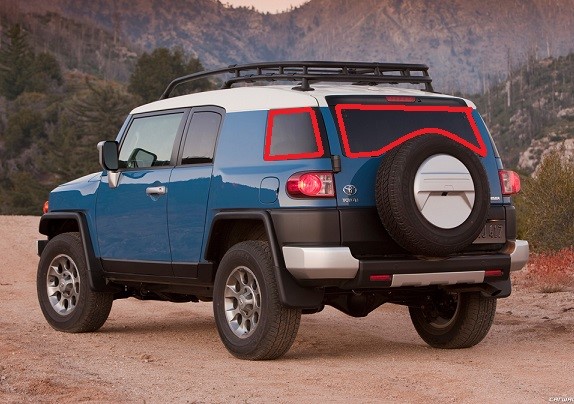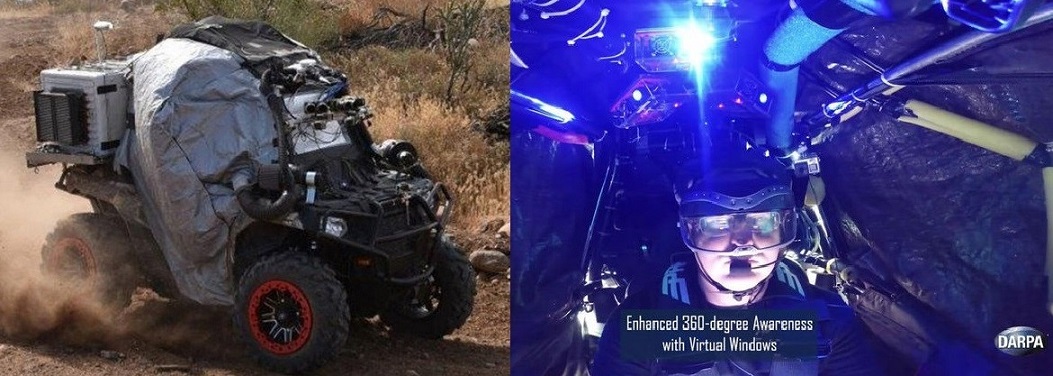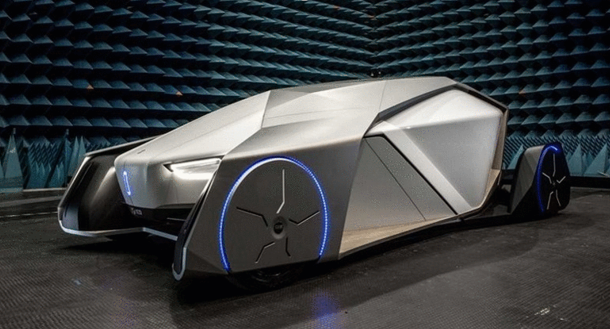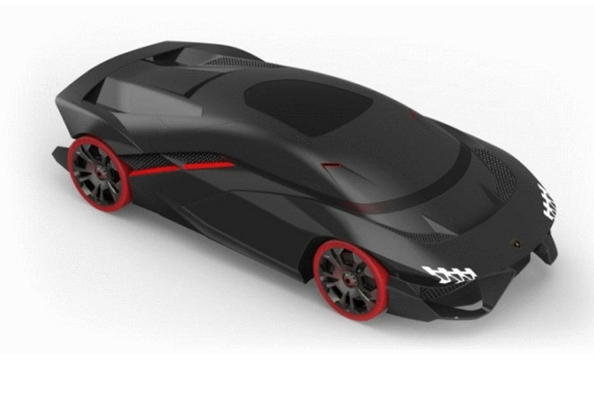Car of the future. Screens instead of autoglass?
Sometime in the 90s there was a fashion for a delicate tint through which nothing could be seen ... many years had passed since then, and the “history” could be repeated at a new technological level.Visibility modern car
This concept means the ability to see without distortion - interference from the surrounding reality from the passenger compartment. At the moment, this parameter is badly damaged in many modern machines. Of course, many may not agree with me, and therefore I will list a number of facts.
1. The tilt of the glasses for better aerodynamics led to a situation where the front end is not visible from the driver’s seat (Daewoo Lanos, Toyota Auris and many other cars), and in passing there is still a slight distortion of the image depending on the bend of the glass.
')
2. The increase in the thickness of the racks in the cabin and reducing the size of the side windows.

So on the example of the WHA we see how much the visibility parameter has changed. They try to fight this problem in different ways . This problem is not only domestic technology, but also many other automakers.
All these measures have been taken to please the strength of the body in a collision. Of course, this is definitely good, but sometimes it is because of a poor review that there are situations of “strength testing”, i.e. Accident?
3. This fact is already from the past, but still sometimes occurs on some cars - “deaf” tinting of all car windows (in some countries there is a direct ban on tinting in general, or there are significant restrictions prohibiting tinted windshield and side front windows) .
4. The high level and angle of the windows of the 5th door.

Toyota FJ Cruiser
Wide rear struts and a spare wheel create large dead spots at the back.

Nissan 350Z / 370Z
Japanese coupe is recognized as one of the worst in terms of visibility. Even direct visibility through the windshield has average values, but the main problem is still the back of the car, which suffers precisely because of the geometry of the body itself.
From the point of view of design, such a decision can be understood, but from the point of view of practice, this nullifies the chances of seeing something from behind in the usual way.
How is this problem solved?
The options here are the same different ...
1st - nothing at all (in the end, many vans and "heels" go without a rear view directly).
2nd - installation of park-tronikov and rear-view cameras.
3rd - Formation of a complex two-tier system.

Honda Civic Hatchback has a two-tier system already in two generations, but this solution only partially solves the problem, and is not effective.
Until that time, there were options for solving the visibility problem from the past and the present, then I will consider the technologies of the near future.
The most radical way is to use 3-D glasses while driving.

So, Honeywell recently tested a system testing a “virtual window” on an ATV. A speed of up to 60 km / h was achieved at which the pilot was fully oriented in space at the expense of external cameras transmitting the image to virtual reality glasses. According to the company, the tests were successful and the management did not differ from the usual driving a car with windows.
In the future, this technology should be applied to the military machine of the new type GXV-T (Ground X-Vehicle Technology)
This military technology looks the most futuristic, but not without meaning.
A more convenient way is “projection - translucence” of external reality.
"Transparent hood" Land Rover
Transparent pillars from Jaguar
Retroreflective projection technology (RPT).
In principle, these technologies make it possible to get rid of the glass in the car at all and that is the hint in many concept cars.
Without glass of the fifth door
Ford SYNus

Instead of the rear window in the concept of a plasma screen. In motion, an image is transmitted from a video camera built into the rear door. On the parking and without moving this screen can be used as a normal computer.

An additional feature of the car was the ability to close the windshield and side windows of the doors with metal panels.
Without side windows

GAC Enverge
Chinese crossover has a number of unusual elements. The steering wheel in the car is made in the “Formula 1” style, the headlights can be removed for autonomous illumination (not the best solution, considering the problems of theft of these headlights), and the side windows are VR displays!
Without glasses in a circle

IED Shiwa Concept
As conceived by the designers, the side panels are OLED displays, on which content can be displayed, and it will be available to both passengers and those outside.

Concept car by John Villarreal "Automotive Concept".
There is no windshield in the car's construction, control is carried out, as in the old joke, “according to the instruments”. The car is equipped with a camera system with night vision, inside the same monitors are installed for the driver.

BMW M3 work of Daniel Nikonchik (Daniel Nikonchik).
In this car of the future, the same will not be glass - only screens with high realism and the mode of "night vision". According to the author's idea, millions of nanocameras will be built into the concept paint, allowing you to see everything outside and at the same time remain “invisible” to others.

Lamborghini LV-426 from Polish designer Tomasz Prigel.
This car is completely devoid of glass, and their function is performed by external cameras and projectors-displays inside the cabin. Perhaps such a tuning "Italian" really would have approached in reality, since the appearance of a supercar has always been a big problem (especially when reversing the Lamborghini Diablo).
Such a "tuning" not only solves the problem of visibility, but also opens up opportunities for redesigning the body of the entire car and improving a number of characteristics that are extremely important for an electric vehicle. More will be in the next article.
PS: Such a future may seem unlikely, but there is already a transport where control through screens is implemented successfully. Therefore, this question is not technically difficult, but legally problematic at the moment. Most likely, the implementation will be similar in its dynamics to the replacement of the side windows with rear view cameras.
Source: https://habr.com/ru/post/433608/
All Articles